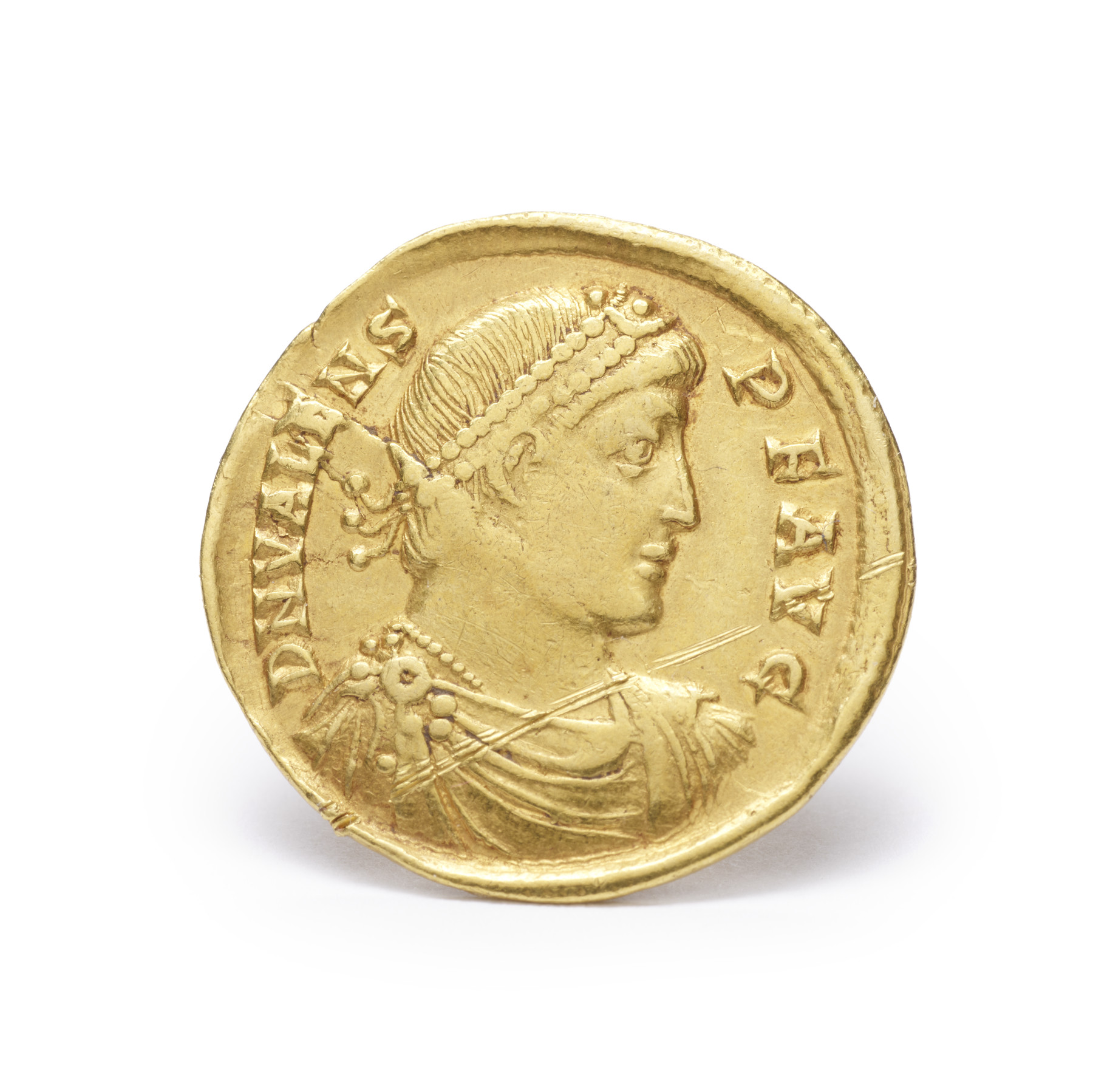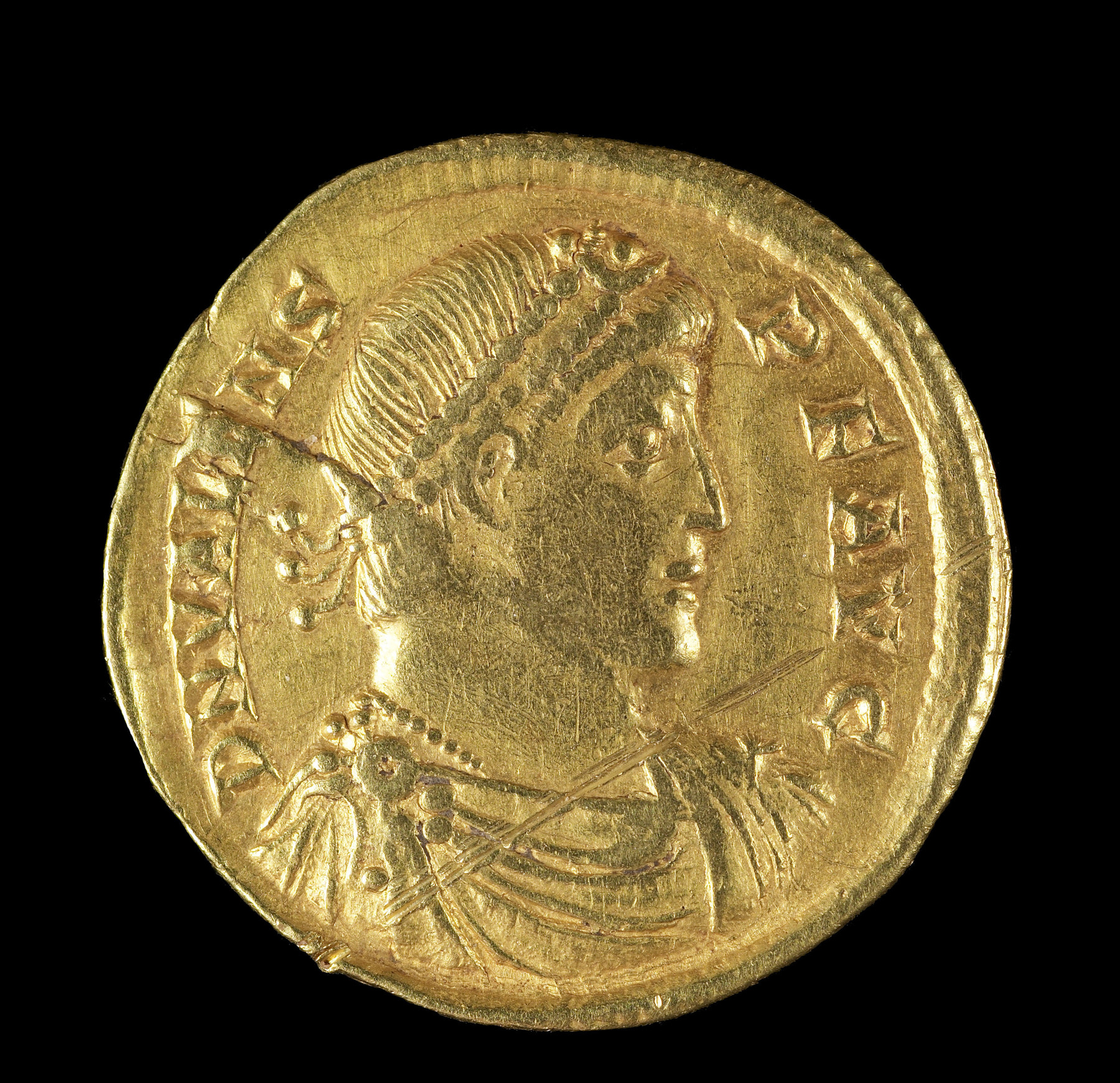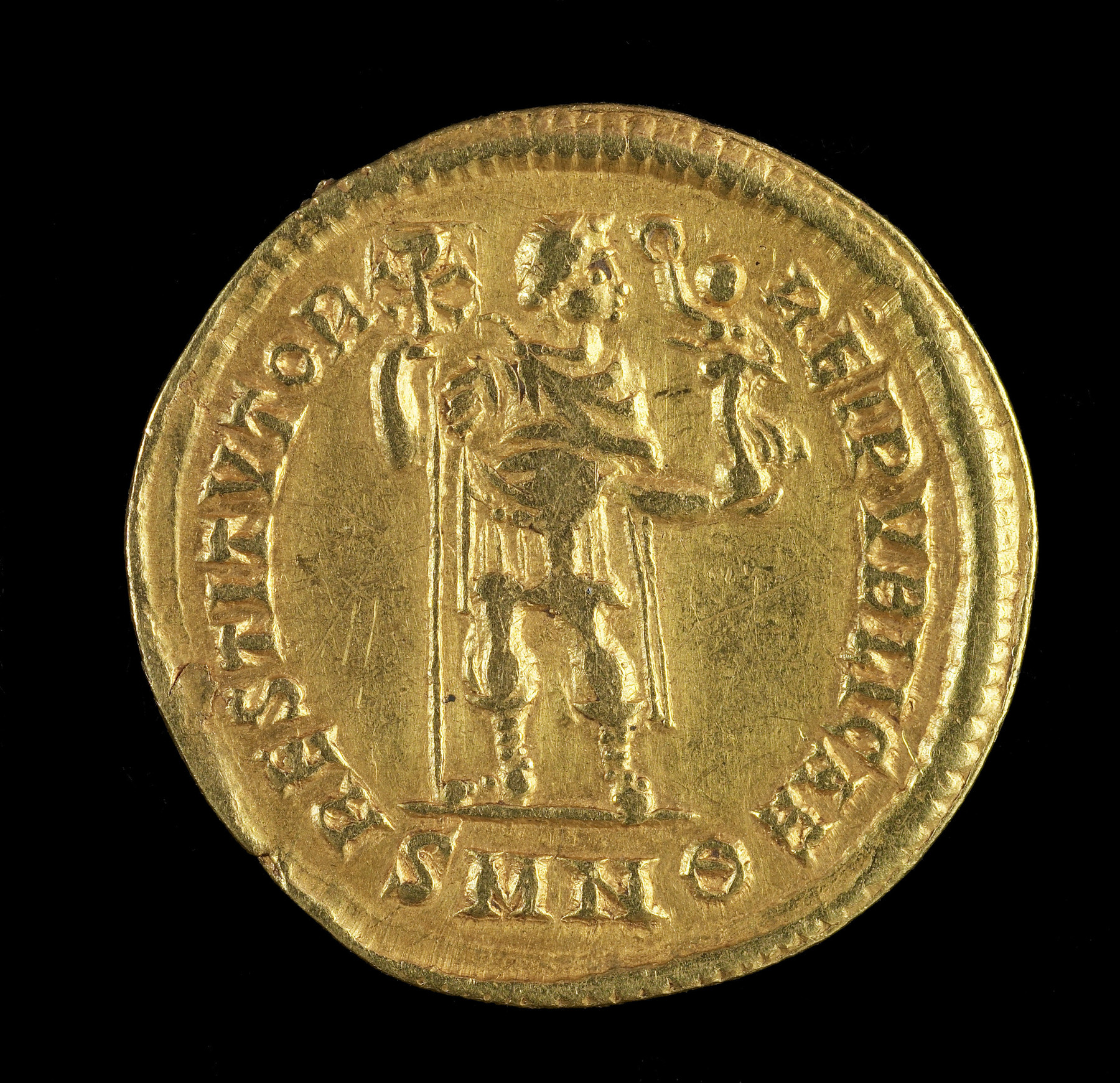Solidus of Valens
Obverse: Bust of Valens, diademed, draped and cuirassed, right. Reverse: Emperor standing frontal, head turned to the right, draped and cuirassed, holding Victory atop a globe in the right hand, a labrum (late Roman standard) with Chi-Rho with the left; Victory crowns the emperor; in exergue, Θ (officina mark); beaded border.
This coin was minted in Nicomedia, present-day Izmit, Turkey, for the emperor Valens, who ruled the eastern half of the Roman Empire from 364 to 378 CE. The obverse shows a bust-length profile portrait of the ruler wearing a beaded diadem, surrounded by the inscription: DN VALENS PF AVG (Dominus Noster Valens Pius Felix Augustus: Our Lord Valens, Dutiful and Lucky Augustus). The coin’s reverse depicts the standing figure of the emperor holding in his right hand a standard surmounted by a Chi-Rho monogram, identifying him as a Christian ruler. The winged Victory who stands atop an orb in the emperor’s left hand holds out a wreath to crown him. This figure is surrounded by the inscription RESTITVTOR REIPVBLICAE (Restorer of the Republic). The Nicomedian mint mark SMN also appears on the coin’s reverse.
Roman coinage played a significant role in the history of portraiture through its early depictions of living emperors and the dissemination of their likenesses, forming the foundation for later coinage in the medieval period and beyond. The portrait style follows that of the 3rd-century CE “soldier emperors,” with strong, stylized profiles so similar in appearance to each other that the individuals are distinguishable only by their titles. The Tetrarchy, or rule of four, succeeded the soldier emperors, and Constantine the Great, the first Christian emperor, eventually overcame the other Tetrarchs and established his family as rulers of the empire.
Although Valens and his brother Valentinian ruled over separate parts of the empire, they used the same mints for coinage as well as reverse imagery and legends, as did other Late Antique co-emperors. The iconography of this reverse blends earlier Roman Imperial traditions, such as standing emperors and personifications of Victory, with the Christian imagery that would eventually predominate on Late Roman and Byzantine coinage.
Inscription
Provenance
Provenance (from the French provenir, 'to come from/forth') is the chronology of the ownership, custody, or location of a historical object. Learn more about provenance at the Walters.
Maurice Bouvier [1901-1981], Alexandria, Egypt, 1940-1950, by purchase; Cleopatra Dibble, Washington, DC, before 1950, by gift; acquired by a private collection; Walters Art Museum, 2017, by gift.
Geographies
Turkey, Izmit (Nicomedia) (Place of Origin)
Measurements
Max diam: 13/16 (2.1 cm); Weight: 0.15 oz (4.37 g); axis: 6:00
Credit Line
Anonymous gift, 2017
Location in Museum
Not on view
Accession Number
In libraries, galleries, museums, and archives, an accession number is a unique identifier assigned to each object in the collection.
In libraries, galleries, museums, and archives, an accession number is a unique identifier assigned to each object in the collection.
59.798








